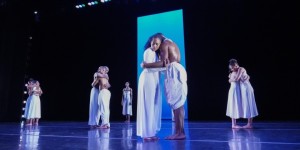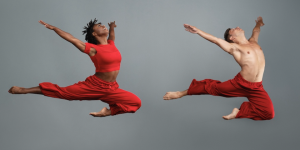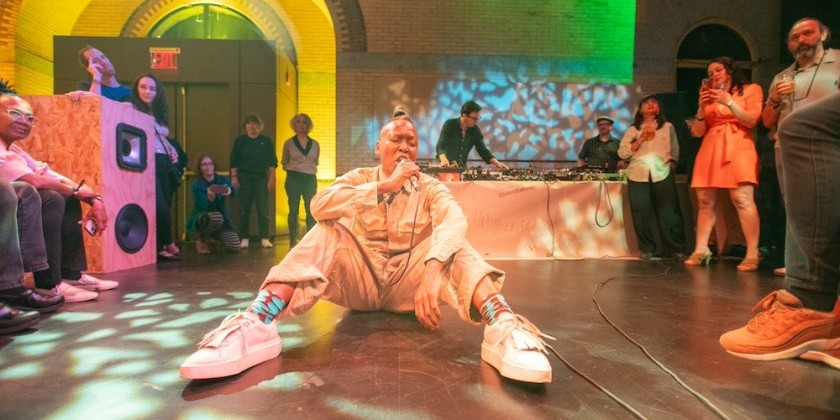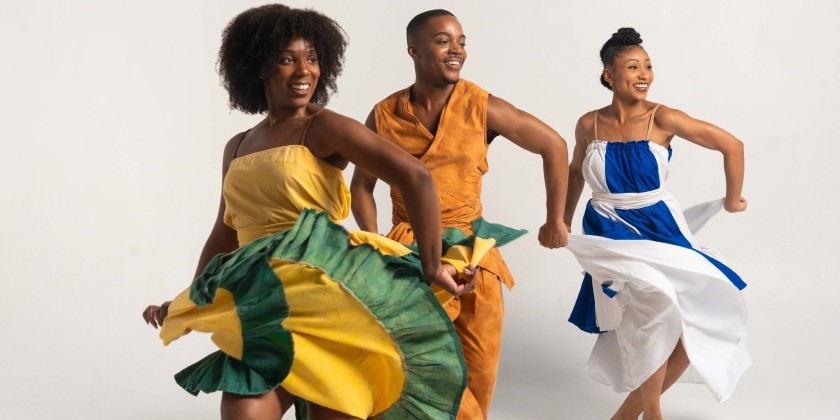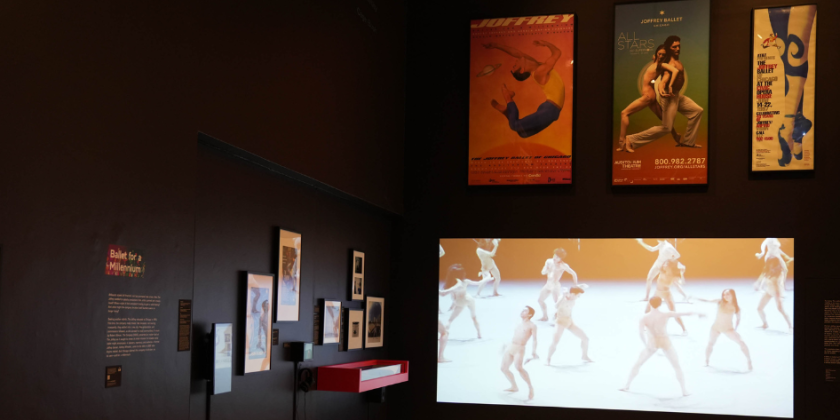IMPRESSIONS: Ronald K. Brown/EVIDENCE presented by Harlem Stage's E-MOVES
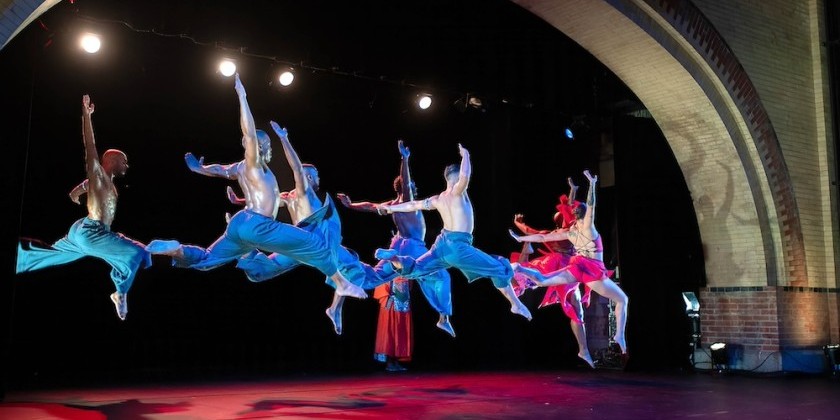
with Joya Powell and Movement of the People Dance Company
Hair Ties
Movement of the People Dance Company
Choreography: Joya Powell in collaboration with Tyrone Bevans, Kendra J. Bostock, Angel Chinn, Brittany Grier, Solana Hoffmann-Carter, and Zenzele Johnson (Research Specialist); with interviews by Erminia Apolinario, Verna J. Hamilton, Jo Johnson, Ava McCoy, Aminah Muhammad, Kaila Paulino, and Theara J. Ward // Music: Farai Malianga // Lighting : Chelsie McPhilimy // Text: Amina Henry and MOPDC // Projections Designer: Evelyn Green, Chelsie McPhilimy, and MOPDC, with captions by Malia Detar Cheung // Costume Designer: Joya Powell with assistance from Christian L. Milik
Costume donors: The Geoffrey Holder Collection, Javier Valencia, and SoHarlem, Inc.
Performers: Tyrone Bevans, Brittany Grier, and Solana Hoffmann-Carter
March
Choreography: Ronald K. Brown //Text: Dr. Martin Luther King, Jr. // Music: Bobby McFerrin
Original Lighting: Brenda Dolan // Lighting Re-creation: Tsubasa Kamei // Costumes: Omotayo Wunmi Olaiya
Performers: Austin Warren Coats and Isaiah K. Harvey
One Shot: Palo y Machete
Choreography: Ronald K. Brown // Music: Anónimo Consejo // Lighting: Dalila Kee // Lighting Re-creation: Tsubasa Kamei // Costumes: Omotayo Olaiya // Performance: Arcell Cabuag
Upside Down
Choreography: Ronald K. Brown // Music: Oumou Sangaré and Wunmi Olaiya
Original Lighting for EVIDENCE: Brenda Gray // Lighting Re-creation: Tsubasa Kamei
Costume Designer: Omotayo Wunmi Olaiya
Performers: Demetrius Burns, Stephanie Chronopoulos, Austin Warren Coats, Joyce Edwards, Isaiah K. Harvey, Gregory Hamilton, Christopher Salango, Adanna Rae Smalls, Shaylin D. Watson
We all need beauty in our lives, and fortunately Harlem Stage is here to supply it. The performing arts series opened its 40th anniversary E-Moves season on October 13, at The Gatehouse, featuring Ronald K. Brown/EVIDENCE in a program of gorgeous, soul-stirring dances. These pieces just keep getting better. Brown’s duet March; the solo Palo y Machete; and Upside Down, for the ensemble, are filled with sumptuous movement; and a flood of vital energy makes them truly inspiring. In addition, the evening showcased an emerging artist, Joya Powell, whom Brown selected to present her trio Hair Ties, a thoughtful commentary on an African-American tradition.
Powell’s Movement of the People Dance Company presented Hair Ties as an ice-breaker. Stepping forward to compliment members of the audience on their appearance, the dancers praised our simple threads while introducing the idea that dressing to go out still matters. Hair Ties goes on to explore a particular fashion statement, the head-wrap. The history of the head-wrap includes 18th-century “Tignon” laws, which required black women in Louisiana to cover their hair. In Powell’s work, this coiffure, grown stylish, emerges as a nexus where ideals of beauty, spiritual beliefs, empowerment, and racism all come together.

Powell equips her three dancers with scarves, which they deftly wrap around their heads or spread out to use as video screens. Recorded interviews recount the life experiences of various women, making this story personal and affecting. And, along the way, the performers dance: hands swimming in the air, feet scampering, heads dipping and hips swishing. They play hand games, and stop to pose luxuriantly. Tyrone Bevans, Brittany Grier, and Solana Hoffmann-Carter are lively and engaging individuals; and Powell allows each personality to shine. This choreographer seems to understand that beauty itself can be tyrannical, and that freedom is always the answer.
The political becomes personal, again, in March, Brown’s astonishing duet from 1995. As the piece begins, Isaiah K. Harvey sidles warily around the perimeter of the stage, while Austin Warren Coats performs sharp gestures in the center, focusing our attention. Brown is a master of choreographic contrast, which he uses to create drama and give his work its visual clarity. In this case, the distinction between the two men, ingeniously separated while occupying the same space, creates a distance that must be overcome. March goes on to tell a “story” in which two people cross this distance to find each other---embracing passionately, lifting, cradling, and sharing an intimacy that suggests more than political solidarity. The voice of Dr. Martin Luther King Jr. gives way to Bobby McFerrin’s gender-swapping setting of the 23rd Psalm (“She makes me lie down in green meadows”). And as the men retreat with one fist raised, the Black Power salute acquires a gentle wave that may signal the revolutionary power of love. March is no less audacious for its subtlety.

The solo Palo y Machete (2007) also suggests a revolution that is ongoing, though the shackles of slavery have been cast off. Those who remember Arcell Cabuag whipping through Brown’s repertory in his youth will receive special satisfaction from the grace and strength of his maturity, as this marvelous dancer flexes his shoulders and chest, dodges, spars, and lifts his arms to heaven. Yes, he shows off, kicking his raised hand, but the red star decorating Cabuag’s beret is more Che Guevara than Chita Rivera. Set to Loma y Machete, Anónimo Consejo’s seductive song of resistance, the flashiest moves enhance the dance’s impact without detracting from its seriousness. Who doesn’t love this man’s virtuosity?
Upside Down, an excerpt from Brown’s evening-length Destiny (1998) singles out Isaiah Harvey, who becomes the focal point of dramatic scenes that imply an individual’s struggle with fate. Yet it is impossible to separate this protagonist from his community. His brothers raise him from the ground, and accompany him on his journey with a hand on each shoulder to steady him. Finally, the women carry his prone body in what appears to be a funeral procession---although Harvey may simply be sleeping, and supported by his ancestors in dreams. The piece suggests a ritual, in which the community dominates. This community is not monolithic, however. The choreographer has broken it into constantly shifting groups and circulating lines that appear in dialogue with one another. Once more, we see Brown’s gift for contrast and counterpoint, as he plays bloc against bloc, squares against triangles, men against women. The composition is stunning.

What most distinguishes Brown’s work, however, is its soaring feeling of uplift, a feeling that originates in African music — here the poignant voice of Oumou Sangaré, and the urgent rhythms of Wunmi Olaiya _ which Brown translates into physical energy. This energy never quits, even in serene moments when dancers walk quietly and seem to step outside the action. It bursts out suddenly in leaps and whiplash turns, but remains present in the smallest, softest gesture. Like love, it is gentle and passionate by turns. At the conclusion of Upside Down, Brown contrasts the stillness of Harvey’s body, borne aloft, with the softly undulating figures of a line of men upstage. Swinging their arms, and delicately shifting their hips, these men maintain a steady pulse, and their line suggests the continuing thread of life. For all its complexity, Upside Down brings us back to essentials, and to the rhythm of our hearts.





